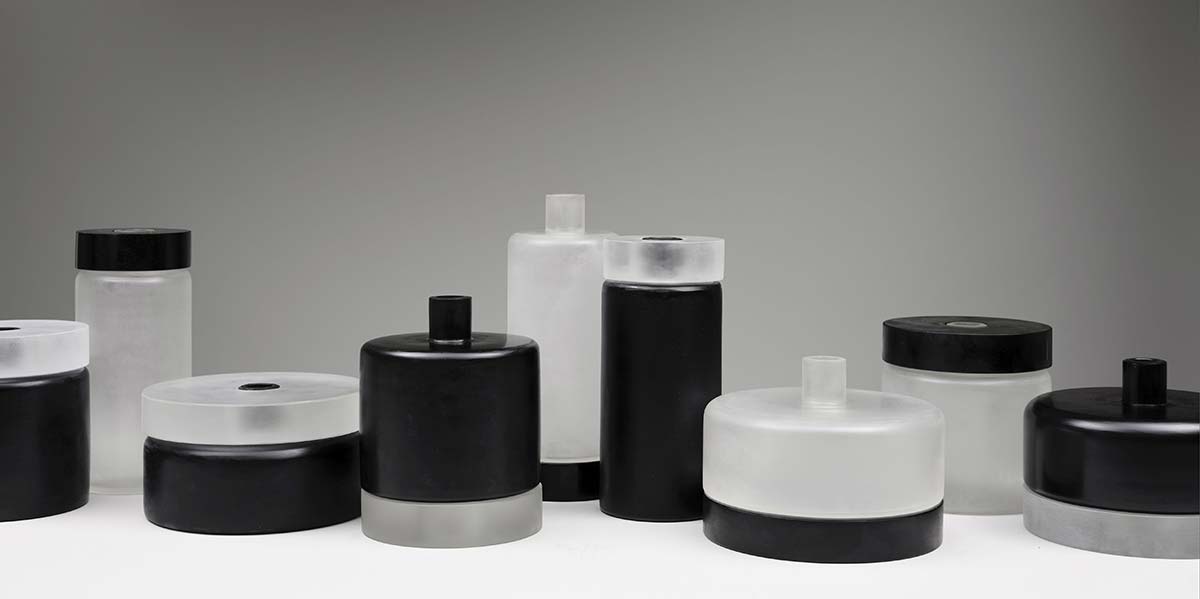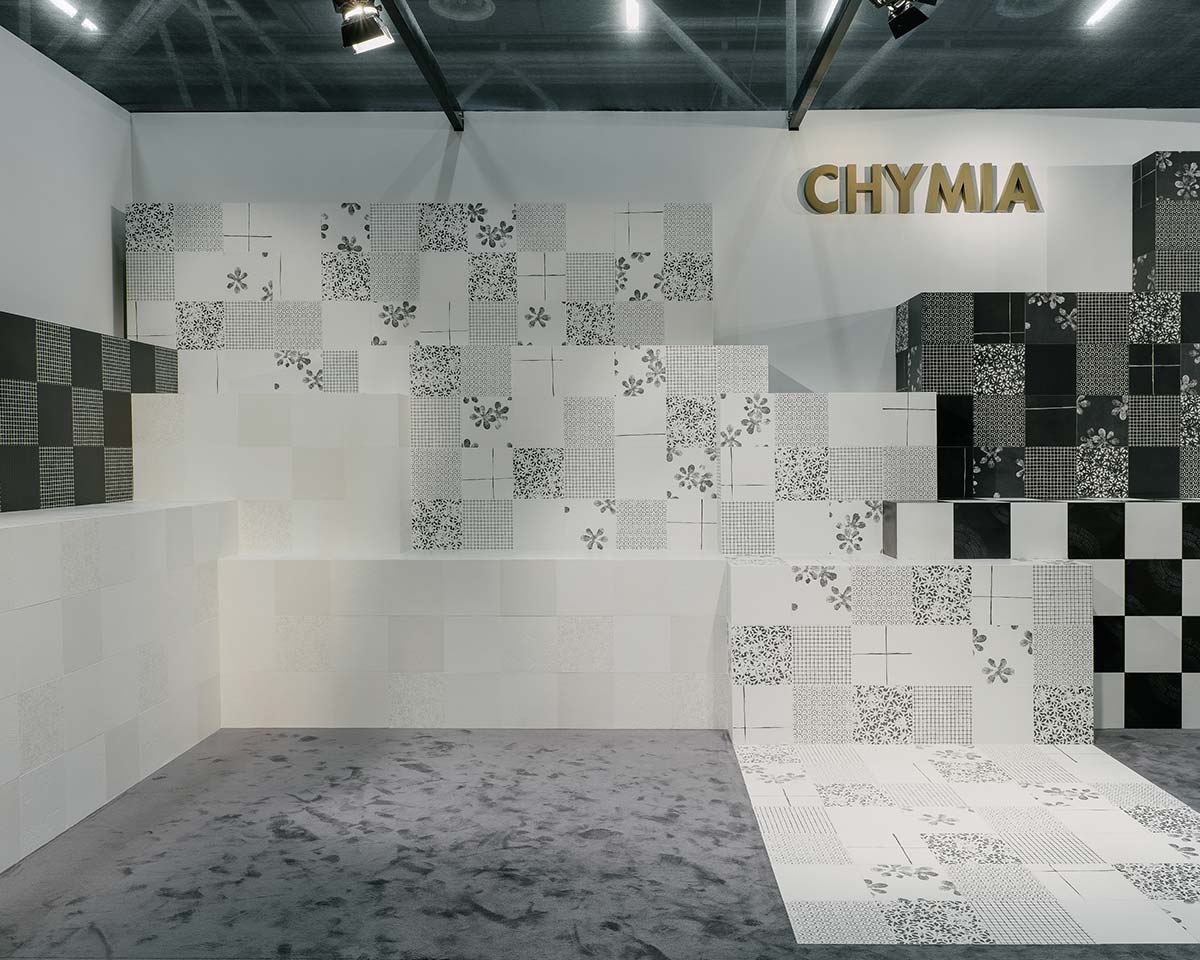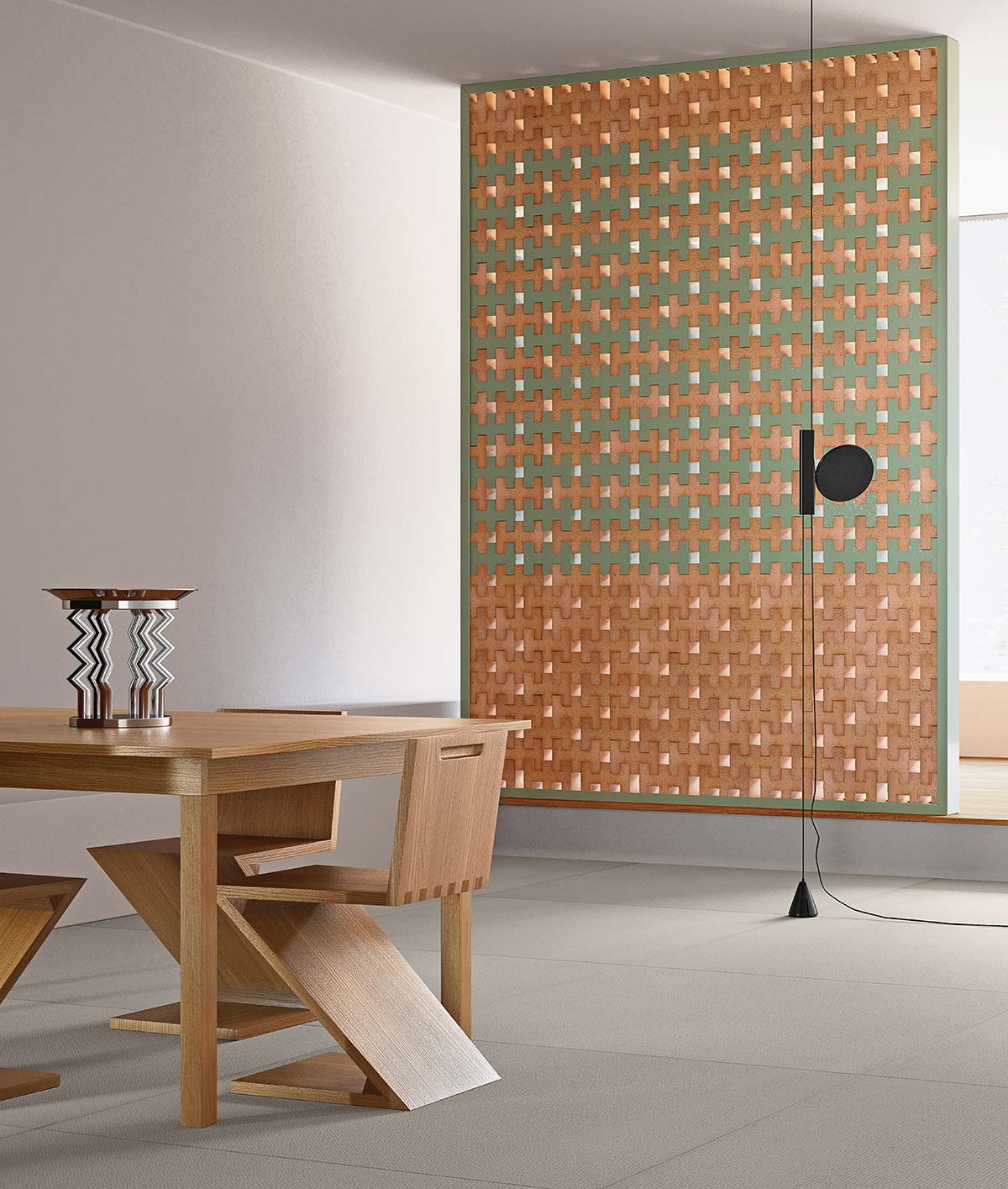New developments and a collection full of various types, formats, colors and uses. These were the features of Mutina’s appearance at the Cersaie fair in Bologna; the outstanding company in the ceramic tile sector brought surprises this year, above all regarding a new project that leads to a new pathway, which will evolve in the future into a range of heterogeneous collections.

The new approach regards Chymia and The Cylinder Glass, a range of objects of great appeal that transform ceramics into a project of interior design – in collaboration with Laboratorio Avallone – that combines technology, hand workmanship and experimentation, to get beyond the limits of the material. The first expression of Chymia & The Cylinder Glass can be seen in the dichotomy of black and white, developed with the goal of giving ceramic material new force and originality.

A collection of pieces in porcelain stoneware – Chymia – and of objects and containers with pure forms – The Cylinder Glass – where we can recognize the distinctive touch of the black color, typical of the works of Gennaro Avallone.
The other new offering of Mutina at Cersaie was Brac, a tile designed by the artist Nathalie Du Pasquier, a 3D design element that functions as a component for the creation of structures and walls. A natural evolution of Bric, the Brac project is a module that can be placed vertically or horizontally, generating surfaces marked by games of light and shadow.

Besides these new projects, Mutina offers a wide-ranging catalogue featuring many collections, often named for the designers who have created them: Patricia Urquiola, Edward Barber & Jay Osgerby, Ronan & Erwan Bouroullec, Tokujin Yoshioka, Yael Mer & Shay Alkalay of Raw Edges, Inga Sempè, Konstantin Grcic, Hella Jongerius.
The set-up of the Mutina booth at Cersaie was also remarkable, with a special installation, a temporary work of architecture created to narrate the identity and foundation values of the company and the brand.







